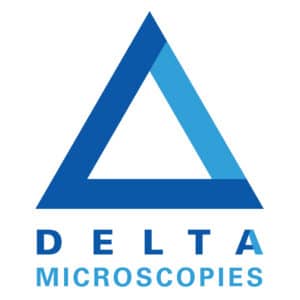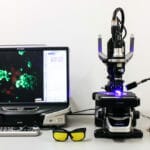Description
Ordering Information
| SFA-KZ2-IND | Best Value Full System Kit Includes three wavelengths (UV + VI + RB), supports ZST, Z100, Z50, Z20, Z00 |
| SFA-KZST-IND | ZST Full System Kit Includes three wavelengths (UV + VI + RB), supports ZST and Z100 |
| SFA-KZB-IND | Basic Full System Kit Includes three wavelengths (UV + VI + RB), supports Z00, Z20, Z50 only |
| SFA-KZ100-IND | Z100 Full System Kit Includes three wavelengths (UV + VI + RB), supports Z100 only |
| SFA-KZ1B-IND | Z1B Full System Kit Includes three wavelengths (UV + VI + RB), supports Z00, Z20, Z50, and Z100 (SFA-KZB-IND and SFA-KZ100-IND combined) |
Fluorescence solutions for most Keyence lenses
Keyence offers a variety of lenses for imaging at different scales. NIGHTSEA offers several variants of our fluorescence adapter system that work with the most commonly used Keyence lenses – the ZST, Z100, Z50, Z20, and Z00.
The key elements of any fluorescence system are:
– a light source that produces sufficient energy in the appropriate wavelength range to excite fluorescence in the sample of interest;
– a barrier filter in the viewing path that blocks reflected excitation light while transmitting the fluorescence emitted by the sample.
NIGHTSEA implements these for the Keyence system with:
– high intensity LED light sources available in five excitation wavelength ranges (see list further down page);
– emission barrier filters that can be added to the Keyence lenses easily and non-invasively.
Here is a sample of what you can see. For many more examples visit our Keyence image gallery.
Comprehensive solution kit
We have configured a versatile Keyence fluorescence adapter kit (part number SFA-K-IND) that includes the most useful excitation wavelengths for varied industry applications, and that adapts to all of the supported Keyence lenses. The SFA-K-IND kit includes the following items, at a package price that is significantly less than purchasing the items separately:
 |
| Custom case for 3-color system for Keyence |
– Three excitation light heads – Ultraviolet (UV), Violet (VI), and Royal Blue (RB) . This recommendation is based on our experience with varied applications. Read the explanation below.
– Two sets of three barrier filters – one set for the ZST and Z100 lenses, one set for the Z00, Z20, and Z50
– Matching barrier filter glasses for each excitation wavelength
– Accessory hardware for mounting the NIGHTSEA light head over the ZST fiber optic input port (enhanced performance at high magnification)
– Gooseneck lamp base with dimming control
– Universal power supply – 120/240VAC, 50/60Hz, with international plug set
– Packing/carrying case with custom-cut foam
We do offer additional wavelength sets that may be of use for other applications.
Why we recommend a set of three excitation wavelengths for industry needs
We have found that the combination of the Ultraviolet, Violet, and Royal Blue excitation/emission sets addresses a wide variety of industrial imaging challenges. The most common misconception we encounter is that fluorescence is uniquely associated with ultraviolet (UV) light and many customers immediately ask for that wavelength. However we have found in several cases – even some in which UV was specifically recommended by a dye manufacturer – that either Violet or Royal Blue provided superior performance. For example:
– A prospective customer wanted to image concrete thin sections impregnated with fluorescent dye. The dye supplier recommended UV, and it is true that UV will make the dye fluoresce nicely. We found that our Royal Blue excitation produced significantly brighter fluorescence.
– Similar to above, except that a fluorescence epoxy had been used to highlight surface cracks in a test sample. Royal Blue excitation yielded brighter fluorescence.
– A prospective customer sent us a sample of material that was known to fluoresce under UV. The goal was to see the distribution of non-fluorescent particles in a fluorescent matrix. While both UV and Royal Blue excited fluorescence in the sample, the best imaging contrast was achieved with Violet excitation.
– We achieve enhanced performance with the ZST lens by mounting the light head on the lens’s fiber optic port, but that path does not transmit UV well. In many cases, for example to inspect conformal coating, Violet is an excellent alternative to UV.
Acquiring the three-color system will provide the highest chance of success and will equip you with a versatile toolkit to address new fluorescence imaging challenges as they arise. Contact us If you would like to discuss your application further.
Performance expectations
The microscopes in the Keyence VHX series were not designed for fluorescence. That said, the NIGHTSEA adapter system adds a fluorescence capability that is proving to be valuable for a growing number of users. Several companies have purchased multiple adapters so that they could replicate the performance across multiple microscopes. In at least one case the customer only purchased their Keyence system because of the added NIGHTSEA fluorescence capability that enabled a critical analysis function for them.
Read more about performance expectations with the NIGHTSEA adapters on the Keyence microscopes.
Wavelength sets
There are five excitation/emission wavelength combinations available for the system.
| Color | Designation | Excitation | Emission |
| Ultraviolet | UV | 360 – 380nm | 415nm longpass |
| Violet | VI | 400 – 415nm | 450nm longpass |
| Royal Blue | RB | 440 – 460nm | 500nm longpass |
| Cyan | CY | 490 – 515nm | 550nm longpass |
| Green | GR | 510 – 540nm | 600nm longpass |
Enhanced performance with the VH-ZST
With the ZST lens and the higher magnification (200 – 2000x) objective you can achieve enhanced performance by removing the Keyence fiber optic illuminator and positioning the NIGHTSEA excitation light head in its place with our custom adapter. This brings the excitation energy through the lens, creating a much more concentrated illumination spot than can be achieved with the light source positioned to the side. We have made fluorescence images at up to 2000x with this configuration.
Read more about achieving the best fluorescence results with the ZST lens.






















Reviews
There are no reviews yet.